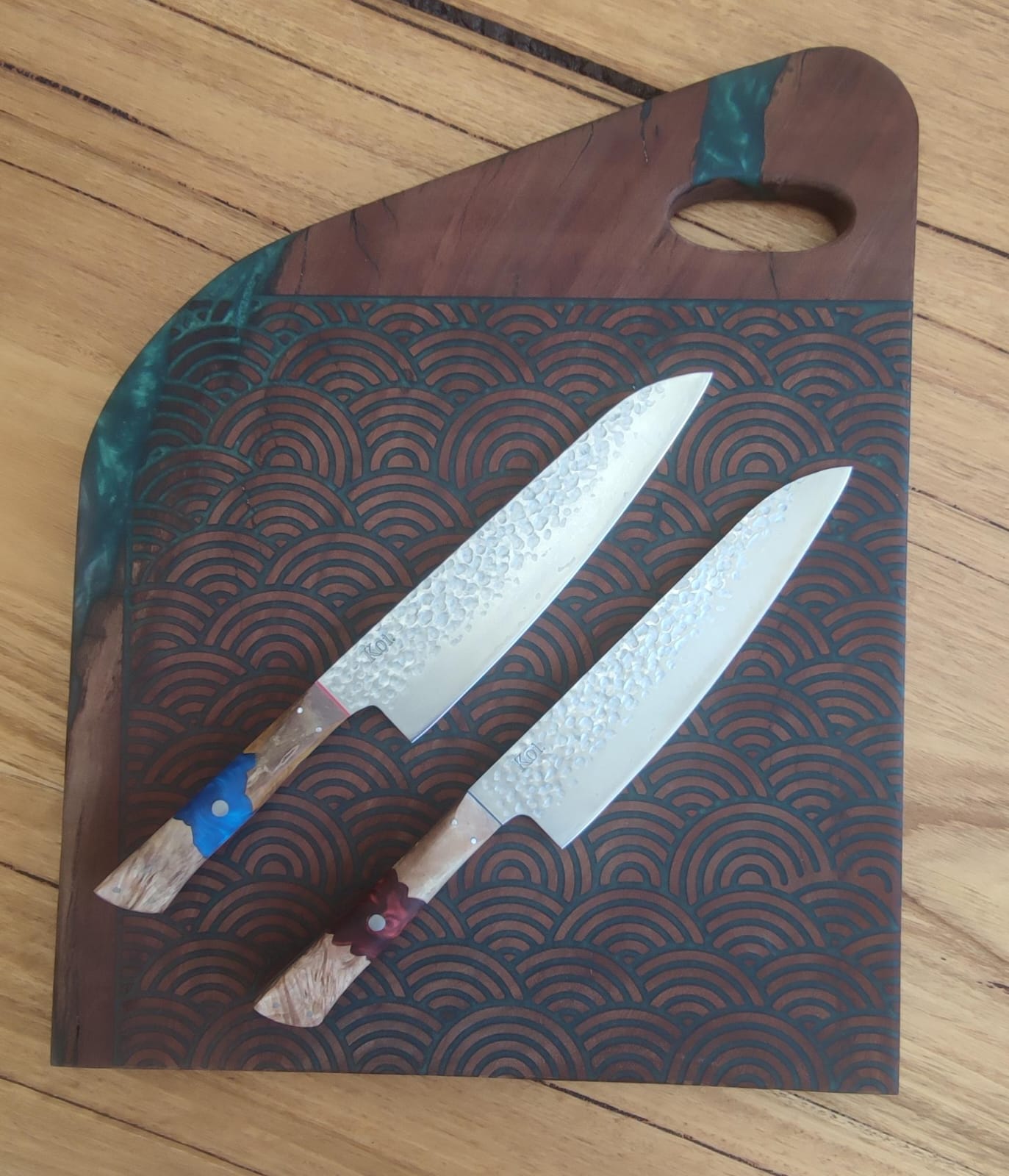Interested in learning or enhancing your knowledge of Japanese knives and why they are recognised as the finest cookery tools? Find out the different knives used in Japanese culinary art and how they are crafted. We will help you pick the best knife for your needs.
A well-crafted knife not only makes a difference in your cutting skills but has a big impact on the final meal as well. Having the proper tools for the right task, means you will achieve the result you had in mind. This is why Japanese knives have a cult following the world over and are popular with famed chefs and cooking enthusiasts.
The various types, brand names, and price offerings out there can make it challenging to choose a good Japanese knife. The three important factors to consider when choosing one include; shape, steel used, and aesthetic appearance (because looks are important, after all). Despite the wide variety of Japanese knives, most people will only use one or two types of knives, opposed to professional chefs who use multiple specific knives for particular tasks.
Gyuto – Japanese Chef Knife
The Gyuto is a versatile chef knife with lengths ranging from 210 to 270 mm. It has a lightweight handle made of hard woods and with no rivets like other western style knives. The metal blade extends partially through the handle but not through to the butt (known as a half or hidden tang). The 210 mm / 8½ inches sized knife is the most common and widely used in the kitchen and similar to a western chef knife. The Gyuto is generally a thin and very sharp knife with a curved tip and flat belly. It is ideal for most tasks in the kitchen.
Petty – Utility Knife
Petty is 150-180 mm in length and a common-size Japanese knife. The knife is also referred to as a utility knife in the western knife lingo. The petty is a multipurpose knife that works well for hand-peeling fruits and vegetables, cutting, and even chopping ingredients on a chopping board. The knife can be as small as 75 mm to make it fit in your hands easily. Due to its versatility, the Petty knife complements the Gyuto very well.
Serrated Bread knife or Pankiri
The main purpose of a serrated bread knife is to slice bread and cut through hard-skinned foods. With teeth like that of a saw, cutting crusty bread or delicate cakes becomes easy, as the serrations allow the knife to glide through ingredients, rather than having to apply pressure downwards. The 240 mm / 9½ inch size is ideal for typical bread cutting tasks, but there's no harm in going for a longer blade. The longer the size, the fewer draws you make and hence fewer chances of crushing or splintering the crust. They can also be very useful with carving fatty meats, like pork and lamb, as the serrations prevent fat from clogging the cutting edge.
Santoku
The Japanese term "Santoku" means three virtues or uses. The Santoku knife is used for meat, fish, and vegetables as it is great at slicing, dicing, and chopping foods. Santoku is a popular style of kitchen knife and is 180mm in length with a short blade. Due to its well-rounded characteristics, the Santoku knife is suited for home cooking and by professional chefs alike. Great as a first knife for cooking enthusiasts, or as a ‘service’ knife for chefs as it can handle most tasks well.
Its flat belly profile makes it useful for push cutting as it meets the board in one stroke.
Nakiri
The Japanese word "Nakiri" means to cut vegetables. A Nakiri knife is rectangular with a flat belly, suitable for push and pull chopping. The Nakiri knife makes it easy to cut vegetables since its added weight allows cutting through foods at once and faster. Similar to a cleaver or cai dao, the heft to this blade makes it a breeze when cutting through tough ingredients.
Paring Knife
It's a small knife ranging from 2-4 inches with a short yet tough blade. The paring knife has a stainless steel blade and is used to peel fruits and vegetables. A paring knife is an adaptable and precise tool, very handy in tasks that require maneuverability. Its small size makes it a must-have for indoor as well as outdoor activities, and yes, it's a great performer of multiple tasks.
Western Style Gyuto
A 210 mm Gyuto knife with a western-style profile where the belly is more rounded, and the knife’s steel goes all the way to the back end of the handle. This makes the handle heavier than the Japanese Gyuto and its balance point is markedly different. The uses of the western style Gyuto are quite similar to that of the Japanese Gyuto.
Single Bevel Knives
Traditionally, Japanese knives were single beveled and employed a variety of shapes and sizes for specific purposes. The single bevel knives were not stainless steel as compared to the nonclassical stainless steel or a mix of carbon steel and stainless steel.
They sharpen very well and fast using whetstones, though they are prone to rust and corrosion. The very specific difference to double-bevel is that they are single handed, if you are left-handed, you will need to buy a left-handed knife. This is due to the shape of the handle and the side of the knife that is dominant.
The three most common single bevel knives:
- Deba
The Japanese knife's primary use is to cut fish, although it can also cut meat. The 180mm Deba knife is heavy, single bevel, and bears a thick spine. A Deba is fun to use, and its handling is slightly different from a chef knife since the bevel is on the side.
- Yanagiba
The Yanagiba is a 180mm Sashimi or Sushi Japanese knife mainly used to cut and slice fish. The knife is used to cut and slice other meats requiring sliced portions. A Yanagiba knife has a slim profile from belly to tip, with a sleek and thin structure. The knife is commonly used in Sushi restaurants to deliver beautiful fish slices with little stress.
- Usuba
Usuba translates to a thin blade. The traditional 180mm Japanese Usuba knife is perfect for cutting vegetables and fruits served raw. The thin blade of an Usuba causes little cell damage minimizing discoloration that leads to changes in flavor. The long blade comes in handy when using the knuckles of the hand to guide cutting, a technique that produces precise and consistent thickness.
Wrapping Up
Japanese chef knives are wide and varied, taking inspiration from across the globe. As Japanese cuisine has evolved since opening to trade and tourism, so to have the tools they used. All with the characteristic eye for detail and endless pursuit of perfection. When selecting a knife, remember the original purpose of the design. The long and slender Yanagiba was created for seafood butchery, so best suits similar tasks. The Gyuto is heavily informed by western cuisine, so suits western and Japanese cuisine. Selecting multiple knives to suit a range of tasks in the kitchen is a great way to increase your cooking skills, but also to keep your knives sharp and ready for the next meal.



